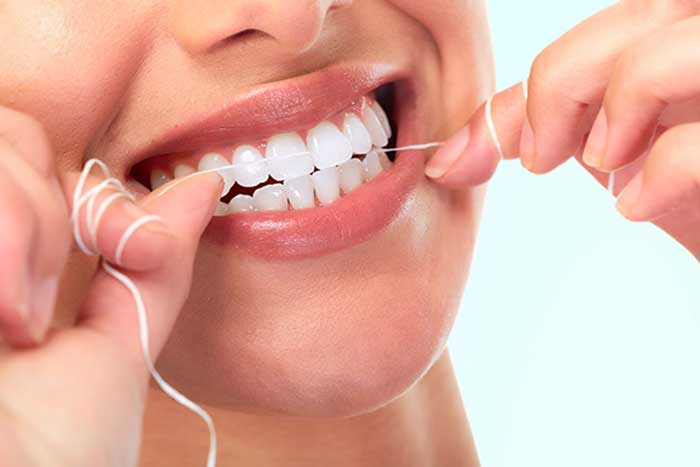The Importance of Flossing

Good dental health includes a mix of personal dental care and the care of your dentist. This includes flossing as an essential step in your daily teeth cleaning routine. Getting into the habit of daily flossing is easier when you floss while doing something else like watching TV or listening to music. One of the many benefits of flossing is removing any plaque or bacteria that you cannot reach with your toothbrush.
In the 2011 Cochrane Oral Health Group review Flossing for the Management of Periodontal Diseases and Dental Caries in Adults, published in JCDA (Journal of the Canadian Dental Association), the authors found “some evidence from twelve studies that flossing in addition to toothbrushing reduces gingivitis compared to toothbrushing alone.” Flossing removes any plaque that is placed in-between the teeth while reducing the chances of gum disease and tooth decay. According to the Canadian Dental Association, you are missing more than one-third of your tooth surface if you don’t floss.
Here are the recommendations from the Canadian Dental Association on how to floss your teeth:
- Step 1: Take a length of floss equal to the distance from your hand to your shoulder. Wrap it around your index and middle fingers, leaving about two inches between your hands.
- Step 2: Slide the floss between your teeth and wrap it into a C-shape around the base of the tooth and gently under the gum line. Wipe the tooth from base to tip two or three times.
- Step 3: Be sure to floss on both sides of every tooth. Don’t forget the backs of your last molars. Go to a new section of the floss as it wears and picks up any particles that are placed in-between the teeth.
- Step 4: Brush your teeth after flossing. This is a more effective method of preventing tooth decay and gum disease.
As long as you do a thorough job, it doesn’t matter if you brush or floss first. However, flossing before brushing might allow more fluoride from your toothpaste to reach between your teeth. In addition to daily brushing and flossing, consider using an antimicrobial mouth rinse or a mouth rinse containing fluoride to promote oral health.
Take control of your oral health and give yourself the gift of a healthy, clean smile by visiting your dental team regularly in South Edmonton at Saddleback Dental Centre. Book your appointment now by calling 780 437-4872 or visit our Contact Us page for more information.
